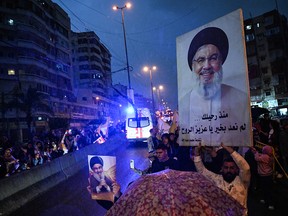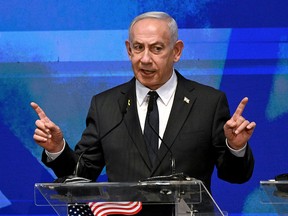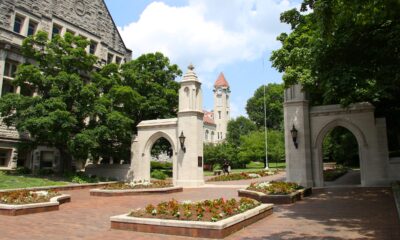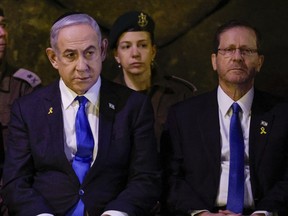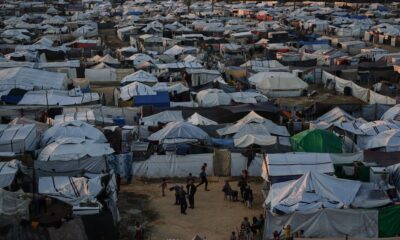World
Violence Erupts in Syria, Threatening Regional Stability
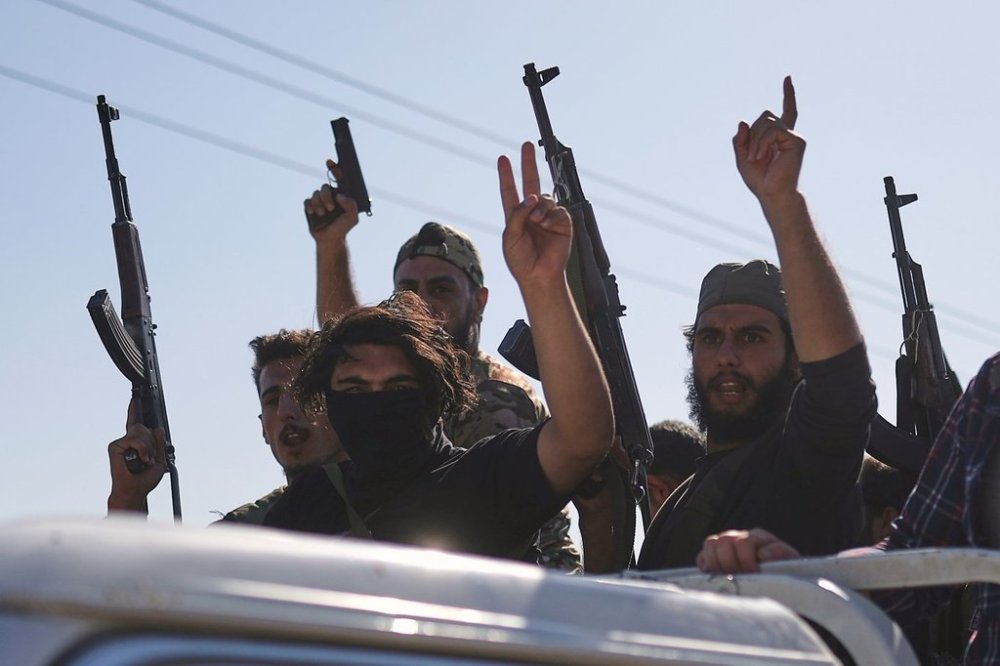
Deadly violence erupted in Syria’s southern province of Sweida this week, involving government forces, local Bedouin tribes, and the Druze religious minority. This turmoil underscores the ongoing instability in the country, seven months after the fall of longtime leader Bashar Assad. The clashes, which left hundreds dead, highlight the sectarian tensions that threaten to reshape alliances both domestically and regionally.
The violence began on October 1, 2023, when conflict broke out between Druze militias and Sunni Muslim Bedouin tribes. Government forces intervened, ostensibly to restore order, but ended up attempting to exert control over Sweida, which is predominantly governed by Druze factions. Reports indicate that some government fighters executed Druze civilians and engaged in widespread looting and arson against their homes.
In response to these developments, Israel conducted airstrikes targeting the Syrian Defense Ministry’s headquarters in Damascus and other military assets. This intervention was perceived as a protective measure for the Druze, who are viewed as a loyal minority within Israel’s borders. Israeli officials have emphasized the importance of maintaining stability in the region, particularly given the Druze’s historical ties to Israel.
By midweek, a truce was mediated, allowing Druze factions to maintain control in Sweida while government forces withdrew. Despite this, clashes continued between Druze and Bedouin groups. On October 4, 2023, Tom Barrack, the U.S. envoy to Syria, announced another ceasefire had been brokered between Israel and Syria, indicating ongoing diplomatic efforts amidst the chaos.
These recent conflicts are not isolated incidents. Since Assad’s departure, sectarian violence has been a recurring theme, with previous clashes resulting in significant civilian casualties among various minority groups. The Alawite sect, to which Assad belongs, has also faced violence, raising concerns among other minorities, including the Druze and Kurds, about their safety under the new government.
The interim government, comprised of factions that helped oust Assad, is perceived as failing to provide adequate representation and assurances to minority groups. According to Bassam Alahmad, executive director of Syrians for Truth and Justice, the current regime’s actions have sent a clear message: military force will be used to control regions like Sweida, reminiscent of Assad’s earlier tactics.
Supporters of the new leadership fear that a retreat in Sweida could encourage other minority groups to seek autonomy, potentially fragmenting an already unstable nation. Abdel Hakim al-Masri, a former official in the Turkish-backed government, expressed concern that allowing Druze control could trigger similar demands from other groups.
Prior to the recent violence, diplomatic channels between Israel and Syria had shown some signs of thawing, encouraged by the previous U.S. administration. However, the Israeli airstrikes have complicated these efforts. Colin Clarke, a senior research fellow at the Soufan Center, noted that the Israeli government is now faced with the challenge of reconciling military actions with diplomatic relations.
The conflict in Sweida is likely to complicate ongoing negotiations, particularly with the Kurdish-led Syrian Democratic Forces (SDF), who have their own concerns about the government’s intentions following recent attacks on minority groups. The SDF had previously agreed to a deal to merge with the national army, but implementation has stalled, indicating deeper mistrust.
As the situation unfolds, the implications of the violence in Sweida extend far beyond Syria’s borders. The Turkish government has classified the SDF as a terrorist organization due to its links with the PKK, a group involved in a long-standing insurgency. This places additional pressure on the new Syrian authorities, as any perceived weakness could invite further Turkish intervention.
In conclusion, the violence in Sweida not only reflects the fragility of Syria’s current political landscape but also poses significant risks of escalating regional tensions. As various factions vie for power and influence, the potential for further conflict remains high, necessitating careful international diplomacy to navigate the complex realities on the ground.
-

 Politics4 weeks ago
Politics4 weeks agoSecwepemc First Nation Seeks Aboriginal Title Over Kamloops Area
-

 World5 months ago
World5 months agoScientists Unearth Ancient Antarctic Ice to Unlock Climate Secrets
-

 Entertainment5 months ago
Entertainment5 months agoTrump and McCormick to Announce $70 Billion Energy Investments
-

 Science5 months ago
Science5 months agoFour Astronauts Return to Earth After International Space Station Mission
-

 Lifestyle5 months ago
Lifestyle5 months agoTransLink Launches Food Truck Program to Boost Revenue in Vancouver
-

 Technology3 months ago
Technology3 months agoApple Notes Enhances Functionality with Markdown Support in macOS 26
-

 Lifestyle3 months ago
Lifestyle3 months agoManitoba’s Burger Champion Shines Again Amid Dining Innovations
-

 Top Stories2 months ago
Top Stories2 months agoUrgent Update: Fatal Crash on Highway 99 Claims Life of Pitt Meadows Man
-

 Politics4 months ago
Politics4 months agoUkrainian Tennis Star Elina Svitolina Faces Death Threats Online
-

 Sports5 months ago
Sports5 months agoSearch Underway for Missing Hunter Amid Hokkaido Bear Emergency
-

 Politics5 months ago
Politics5 months agoCarney Engages First Nations Leaders at Development Law Summit
-

 Technology5 months ago
Technology5 months agoFrosthaven Launches Early Access on July 31, 2025

